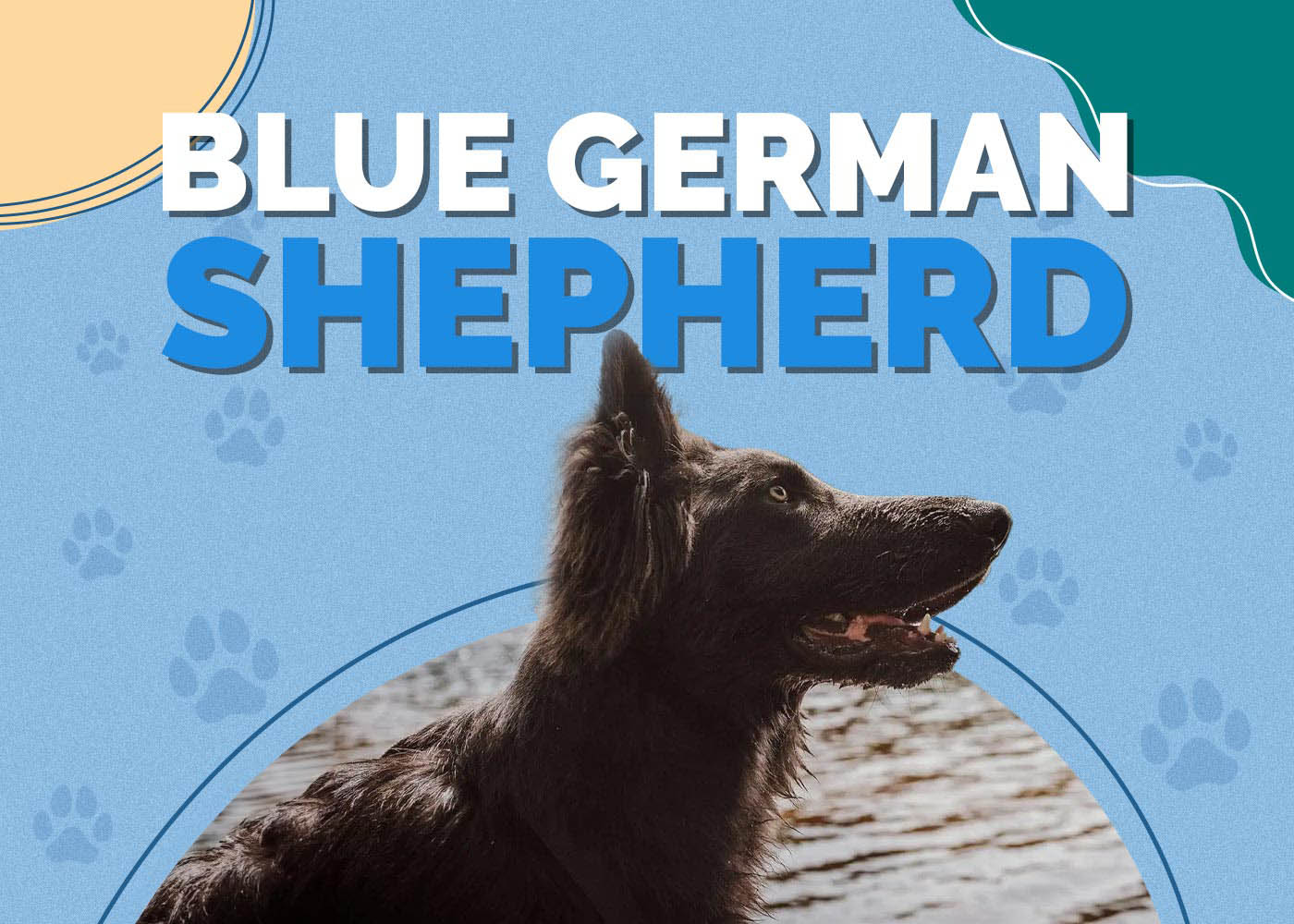Blue German Shepherd Dog Breed: Info, Pictures, & Traits

Updated on

Height:
24-26 inches
Weight:
65-90 pounds
Lifespan:
9-13 years
Colors:
Combination of “blue” with tan & black or sable
Suitable for:
Companionship, families, police dog, watchdog, farm dog
Temperament:
Intelligent, loyal, loving, protective, energetic
Did you know that the German Shepherd Dog is the second most popular breed in the United States? These loyal, intelligent dogs can be found in family households, working on police forces, and even accompanying U.S. troops during wartime.
What you might not know is that German Shepherds come in more than one coloration. Along with more common colors like white and black, Blue German Shepherds are a unique variation of the breed’s traditional brown-and-black coat.
While the German Shepherd Dog is one of the most recognizable breeds out there, these dogs aren’t meant for everyone. In fact, despite their immense popularity, German Shepherds are rarely recommended for first-time dog owners.
Here’s what you need to know before bringing a Blue German Shepherd Dog into your home:
Blue German Shepherd Puppies
Because the breed is so popular, finding a standard puppy or adult dog in need of a home isn’t hard. Finding a Blue German Shepherd Dog is much more difficult, though not impossible. Regardless of color, all German Shepherd Dogs are showstoppers. At 22 to 26 inches tall at the shoulder and up to 90 pounds, many people underestimate the size of these dogs until they meet one face-to-face.
When adding a new dog to your life, you may prefer adopting over shopping. While, in general, German Shepherds are pretty common in rescues and shelters, this isn’t the case for Blue German Shepherds. Finding a Blue German Shepherd to adopt takes quite a bit of luck. However, you can increase your chances by connecting with breed-specific rescues in your area. At the end of the day, if you have your heart set on a Blue German Shepherd, you’ll probably need to buy one from a breeder.
The Blue German Shepherd Dog is just like any other member of this breed, just with a different colored coat.
Things to Know When Owning a Blue German Shepherd
Since Blue German Shepherd Dogs are just a different color than the rest of the breed, they require the same exact care as any other German Shepherd. These dogs aren’t a match for every lifestyle, though, so it’s important to know what to expect.
Grooming ✂️
Compared to many breeds, the German Shepherd requires very little grooming. Dogs should be brushed or combed once a week to remove loose fur and dander.
Keep in mind that these dogs are double-coated and shed once or twice per year. During these periods, your German Shepherd will require more frequent brushing and will lose fur in large clumps.
With regular grooming, a German Shepherd won’t shed much extra fur around the home. Failing to adhere to a grooming routine could mean finding clumps of fur on your furniture, floors, and everywhere in between.
- Also see: Best Dog Shampoos – Reviews & Top Picks
Food & Diet Requirements 🏡
Blue German Shepherd Dogs should be fed a large-breed formula throughout their lives. You can find food for large breed puppies and adult dogs from most popular brands.
Because the breed is at a significant risk of hip and elbow problems, supplementing your dog’s diet with glucosamine may be a good idea. Talk to your veterinarian to learn what supplements would most benefit your dog.
Exercise 🐕
One of the biggest problems faced by German Shepherd owners is the breed’s need for plenty of daily exercise. Along with physical activities, these dogs also require mental stimulation to prevent boredom.
While daily walks are a necessity, German Shepherds are happiest when they have a task to complete. They excel at competitive sports like agility and herding, and also make great workers for small hobby farms.
Offering plenty of mental and physical exercise isn’t just about keeping your pup healthy. When not given enough to do, German Shepherds are prone to developing serious behavioral issues, including destroying property.
Training 🦮
For the German Shepherd, socialization from an early age is incredibly important. Bred as herding guard dogs, they’re naturally aloof and untrusting of strangers. If a young German Shepherd isn’t taught to be comfortable around new people, animals, and environments, they can become reactive or even aggressive later in life.
Obedience training should also be a top priority from puppyhood since the breed is known for being especially headstrong. With consistent socialization and bonding, though, these dogs are quite easy to train.
All in all, German Shepherds are smart and eager to please their owners. However, they need an experienced trainer to meet their full potential.
https://www.instagram.com/p/CCdt-uuhmhi/?utm_source=ig_web_copy_link
Health and Conditions ❤️
Because of their size, German Shepherds are at risk for several conditions found in large breeds. Outside of these disorders, though, the breed is quite healthy.
- Bloat
- Cataracts
- Hip dysplasia
- Elbow dysplasia
- Diabetes
- Degenerative Disc Disease
In general, Blue German Shepherds don’t carry any unique health risks. With that said, unethical breeders may mate with related dogs to create more puppies with this coloring.
Inbred German Shepherds are more likely to develop genetic defects like hip and elbow dysplasia. Dogs bred in this way may also present more behavioral problems, including an increased rate of aggression.
Along with routine vet care, the best way to ensure a healthy and happy dog is by purchasing from a responsible, registered breeder.
Conclusion
Maybe you want to bring a German Shepherd into your home, but you want something a bit different than the standard brown-and-black variety. If so, the Blue German Shepherd Dog is a great option that requires the same type and level of care as the rest of the breed.
While German Shepherds can make excellent family dogs when they’re placed in the right household, they still need plenty of exercise and mental stimulation to thrive. Because of this, it’s important to have enough space and free time to ensure these needs are met.
Unfortunately, the German Shepherd’s history as a livestock guard dog has given it a reputation for aggression toward strangers. To prevent this behavior, thorough socialization is a must from an early age. With the right techniques and discipline, Blue German Shepherd Dogs are extremely easy to train.
Overall, the Blue German Shepherd is a unique spin on one of America’s most popular dog breeds. They’re healthy, intelligent, and incredibly loyal to their family members. What more could you really ask for?
What is your favorite German Shepherd coloring? Let us know in the comments below!
- Related Read: What Exactly Is a Lycan Shepherd? Do They Exist?
Featured Image Credit: Veronika Csereiova, Shutterstock












